Ditapis dengan
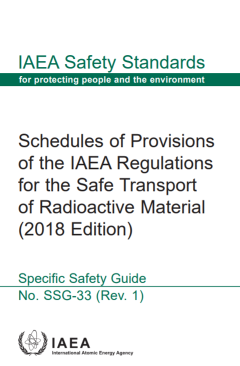
IAEA - Safety Standards Series No. GSR Part 5 : PREDISPOSAL MANAGEMENT OF RAD…
This Safety Requirements publication applies to the predisposal management of radioactive waste of all types and covers all the steps in its management from its generation up to its disposal, including its processing (pretreatment, treatment and conditioning), storage and transport. Such waste may arise from the commissioning, operation and decommissioning of nuclear facilities; the use of radi…
- Edisi
- -
- ISBN/ISSN
- 978–92–0–111508–9 / 1020–525X
- Deskripsi Fisik
- 56 p
- Judul Seri
- -
- No. Panggil
- -
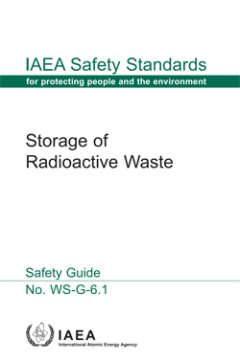
Storage of Radioactive Waste, Safety Guide
Radioactive waste is generated in a broad range of activities involving a wide variety of radioactive materials associated with, for example, the operation of nuclear facilities, the use of sealed radioactive sources in industry, the use of human made radionuclides in hospitals and laboratories, and the decommissioning of such facilities. The physical, chemical and radiological characteristics …
- Edisi
- -
- ISBN/ISSN
- 9201067062 / 1020525X
- Deskripsi Fisik
- 55 p. : Illus. ; 24 cm
- Judul Seri
- Safety Standards Series No. WS-G-6.1
- No. Panggil
- -
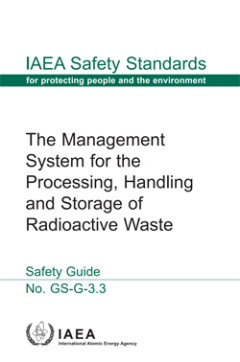
THE MANAGEMENT SYSTEM FOR THE PROCESSING, HANDLING AND STORAGE OF RADIOACTIVE…
The objective of this Safety Guide is to provide guidance on the development and implementation of management systems for the pretreatment, treatment, conditioning and storage of radioactive waste. This publication also includes a description of how to apply the requirements detailed in IAEA Safety Standards Series No. GS-R-3, to the activities associated with producing a packaged waste form fo…
- Edisi
- -
- ISBN/ISSN
- 9789201020086 / 1020525X
- Deskripsi Fisik
- 79 p. : Illus. ; 24 cm
- Judul Seri
- Safety Standards Series No. GS-G-3.3
- No. Panggil
- -
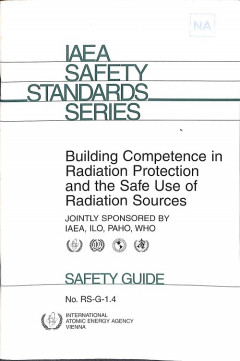
Building Competence in Radiation Protection and the Safe Use of Radiation Sou…
This Safety Guide, co-sponsored by the ILO, PAHO and WHO, makes recommendations concerning the building of competence in protection and safety within a national radiation protection infrastructure, and provides guidance for setting up the structure for a national strategy. It relates to the training and assessment of qualification of new personnel and the retraining of existing personnel in ord…
- Edisi
- -
- ISBN/ISSN
- 9201007019 / 1020525X
- Deskripsi Fisik
- 37 p. : Illus. ; 24 cm
- Judul Seri
- Safety Standards Series No. RS-G-1.4
- No. Panggil
- -
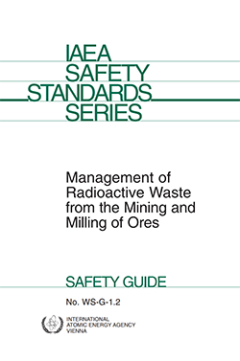
Management of Radioactive Waste from the Mining and Milling of Ores, Safety G…
This Safety Guide provides recommendations and guidance on the safe management of radioactive waste resulting from the mining and milling of ores, with the purpose of protecting workers, the public and the environment from the consequences of these activities. It supplements Safety Standards Series No. WS-R-1, Near Surface Disposal of Radioactive Waste.
- Edisi
- -
- ISBN/ISSN
- 9201158025 / 1020525X
- Deskripsi Fisik
- 39 p. : Illus. ; 24 cm
- Judul Seri
- Safety Standards Series No. WS-G-1.2
- No. Panggil
- -
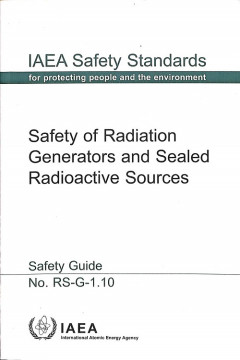
Safety of Radiation Generators and Sealed Radioactive Sources, Safety Guide
The objective of this Safety Guide is to assist Member States in implementing regulatory requirements for radiation sources that will ensure their safety. To that end, this publication provides guidance on infrastructure responsibilities for safety, on methodologies for performing safety assessments and on specific design and operational measures that should be taken to ensure safety throughout…
- Edisi
- -
- ISBN/ISSN
- 9201075065 / 1020525X
- Deskripsi Fisik
- 59 p. : Illus. ; 24 cm
- Judul Seri
- Safety Standards Series No. RS-G-1.10
- No. Panggil
- -
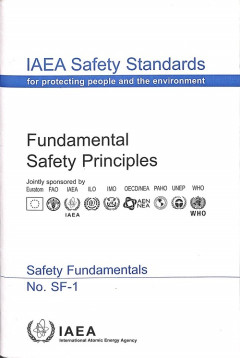
Fundamental Safety Principles, Safety Fundamentals
This publication states the fundamental safety objective and ten associated safety principles, and briefly describes their intent and purpose. The fundamental safety objective — to protect people and the environment from harmful effects of ionizing radiation — applies to all circumstances that give rise to radiation risks. The safety principles are applicable, as relevant, throughout the en…
- Edisi
- -
- ISBN/ISSN
- 9201107064 / 1020525X
- Deskripsi Fisik
- 21 p. : Illus. ; 24 cm
- Judul Seri
- Safety Standards Series No. SF-1
- No. Panggil
- -
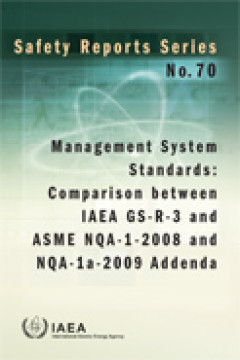
MANAGEMENT SYSTEM STANDARDS: COMPARISON BETWEEN IAEA GS-R-3 AND ASME NQA-1-20…
This Safety Report compares the requirements of IAEA Safety Standards Series No. GS-R-3, The Management System for Facilities and Activities, and the American Society of Mechanical Engineers (ASME) Quality Assurance Requirements for Nuclear Facility Applications (ASME NQA-1-2008, NQA-1a-2009). It identifies the similarities and differences between them and provides information and guidance to a…
- Edisi
- -
- ISBN/ISSN
- 9789201208101
- Deskripsi Fisik
- 76 pages, 24 cm
- Judul Seri
- Safety Reports Series 70
- No. Panggil
- -
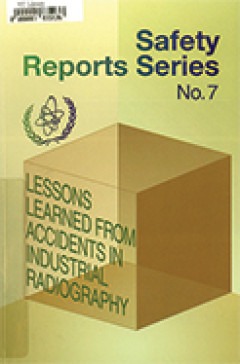
Lesson Learned from Accidents in Industrial Radiography
This Safety Report contains the findings of extensive research in terms of the lessons that can be learned from accidents which have occurred in industrial radiography, both in developed and developing countries. The review was carried out by a team of regulatory authorities, manufacturers and safety advisers. The objectives were to draw lessons from the initiating events of the accidents, the …
- Edisi
- -
- ISBN/ISSN
- -
- Deskripsi Fisik
- -
- Judul Seri
- Safety Reports Series No. 7
- No. Panggil
- -
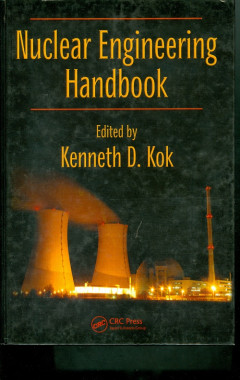
Nuclear Safety in Light Water Reactors: Severe Accident Phenomenology
- Edisi
- -
- ISBN/ISSN
- 9780123884466
- Deskripsi Fisik
- 714 p. : illus. 23,5 cm
- Judul Seri
- -
- No. Panggil
- 621.4835 Seh n
- Edisi
- -
- ISBN/ISSN
- 9780123884466
- Deskripsi Fisik
- 714 p. : illus. 23,5 cm
- Judul Seri
- -
- No. Panggil
- 621.4835 Seh n
 Karya Umum
Karya Umum  Filsafat
Filsafat  Agama
Agama  Ilmu-ilmu Sosial
Ilmu-ilmu Sosial  Bahasa
Bahasa  Ilmu-ilmu Murni
Ilmu-ilmu Murni  Ilmu-ilmu Terapan
Ilmu-ilmu Terapan  Kesenian, Hiburan, dan Olahraga
Kesenian, Hiburan, dan Olahraga  Kesusastraan
Kesusastraan  Geografi dan Sejarah
Geografi dan Sejarah